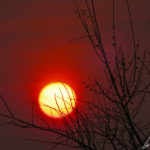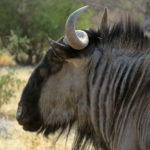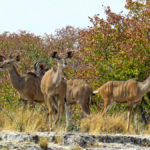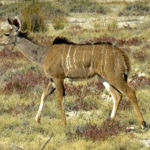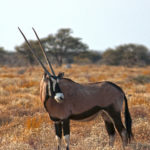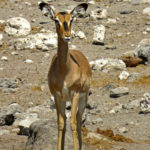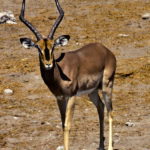Namibia‘s animals consist of many species: 200 mammals, 645 birds, 250 reptiles, and more than 6,300 different insects. One-quarter of these are endemic to Namibia… It is also no secret that Etosha National Park is the best place to observe Namibian fauna, especially during the dry season from May to October. The status of the park as a protected reserve and its numerous sources of water make it an idyllic refuge for many animals. Etosha National Park is home to 114 species of mammals, more than 100 different reptiles, and over 340 species of birds. Yet, finding animals in the wild is not always easy for an untrained eye: the park is full of rocks that look like Rhinoceros backs, termite mounds that look like a resting Impala, and dead branches that look like a sitting Cheetah… Photographing nature is much fun, but it is not easy to get close to animals… Wildlife photography is challenging because animals may not show themselves always in their best profile. It takes a lot of patience to capture the perfect shot. But no matter, today we accept the challenge! We will need patience, patience and more patience. And undoubtedly, stubbornness… Hakuna Matata.

Wildebeest and Zebras: an example of animal symbiosis
At dawn, the colors dance, writhe, whirl, twirl like mother-nature pirouetting to sensual music. We immortalize this careful choreography in a snapshot of a beam of orange-red light bursting through a glowing sky, a dramatic sunrise. What a beautiful picture! However, it is time for us to sharpen our weapons (i.e., our cameras) to try to capture a portrait of the many animals in Etosha Park.
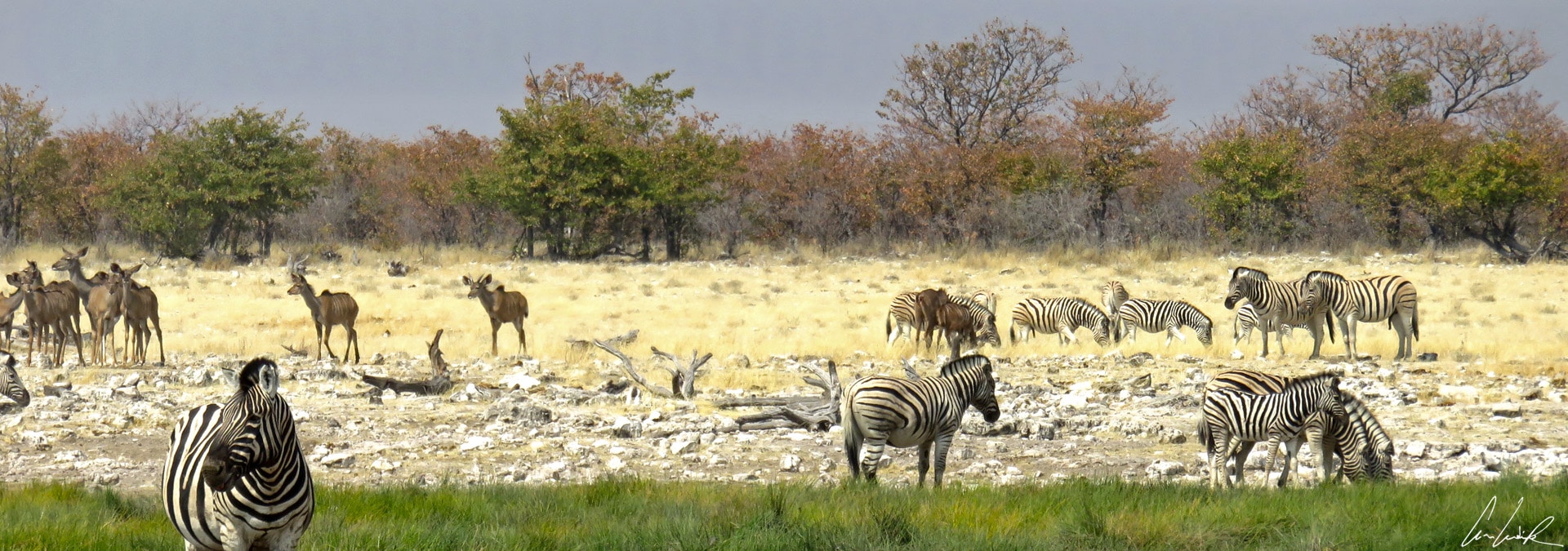
Many wild herbivores such as Zebras, Kudu, Oryx, Wildebeest, Springboks, Impala and Common Eland abound in the park’s grasslands. We thought we would be waiting for hours before seeing the shadow of an Antelope, but we soon meet a huge herd of Blue wildebeest, which are Antelopes despite their distinct appearance…
« What my face? / What it has my face? / Something’s wrong? / It’s not up to you ! »
Ma gueule by french singer Johnny Hallyday
The Blue wildebeest, or Gnu, gives the impression of being a combination of two different animals. Its narrow and elongated head, broad snout and upwardly curved horns suggest that it is a close relative of European cows. This is probably what the scientists thought when they first named the species “Connochaetes taurinus”. All wrong! On the other hand, from the waist down, the Gnu looks more like an Antelope… The other characteristic of the Gnu is its mane adorning its back and its long beard. In Disney Wildebeests are generally presented as food for lions (see the spectacular sequence of Wildebeest rushing down the parade in “The Lion King”).
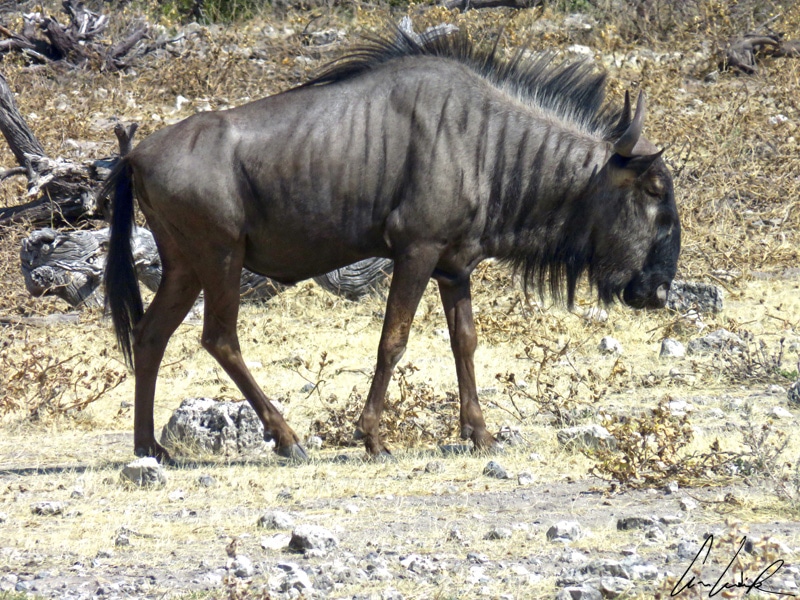
Ah, ah, now it is my turn to ask: did you know ? During migrations, Zebras and Wildebeests join forces to form huge groups to minimize any danger from predators, mainly Lions and Leopards… To survive in this world, it is essential to establish connections, right ? This peaceful coexistence between individuals of different species, through which one or both parties benefit, is a form of animal symbiosis, and since nature is well made, these two species eat different things. There is, therefore, no food competition! Zebras, which come first, eat the young shoots of the grass while the Wildebeests enjoy the base and sometimes roots. Let’s take a closer look at the Zebra, this strange striped animal…
The enigmatic Zebra’s stripes….
What a funny thing a Zebra is ! In French, we call a peculiar or unusual person a “zebra”. True, the animal, with its unique black-and-white striped coat, is unusual. What a wonderful mystery the Zebra’s stripes. Besides, what is the color of the Zebra: black and white or white and black? Let’s not keep the suspense much longer since the zoology has answered the question. First, we believed that Zebras were white since some animals have white underbellies, but embryological evidence shows that the animal’s background color is black and that the white stripes and belly come later as the little Zebra grows, the stripes forming a unique pattern for every animal. The Zebra keeps its unique black-and-white stripes pattern all its life. Another significant surprise: Zebras are not symmetrical. There are considerable differences between patterns on the right and left sides. Zebra, oh my handsome Zebra, show me your best side…

But what remains of the mystery of the Zebra’s stripes, you may ask. A question is still open. The stripes have fascinated scientists, and several hypotheses about their use have emerged. For almost a century, zoologists have studied the use of the stripes resulting in no less than eight different identified theories to explain the biological function of this strange coat. Four hypotheses remain in the race today… Attention, ladies, and gentlemen make your bets !
– The stripes constitute camouflage (Alfred Russel Wallace, 1889). A group of moving zebras may appear as one large mass of flickering stripes, a visual illusion disrupting the predators’ vision. The stripes would create a strobe effect that would disturb hunting beasts, blurring their appreciation of the distances and number of Zebras in the herd… This is a bit like the Dazzle camouflage, also known as razzle dazzle or dazzle painting, used on warships to disrupt enemy gunners in the last year of World War I
– The stripes may be thermoregulatory. The alternation of black and white could form micro vortices of air, which would cool the animal… How did biologists come up with all these ideas ?
– The stripes repel insects and other parasites, including horseflies. This old hypothesis (Harris, 1930) comes from the observation of tsetse flies and other flying species that avoid the stripes and prefer solid fields…
– The stripes may be used as identification among individuals. This hypothesis seems logical since the pattern of stripes is unique to each Zebra. However, Wild horses, which have the same social organization as Zebras, do not need such embellishments to recognize one another… The truth is elsewhere as Fox Mulder of the cult series X-Files would say.
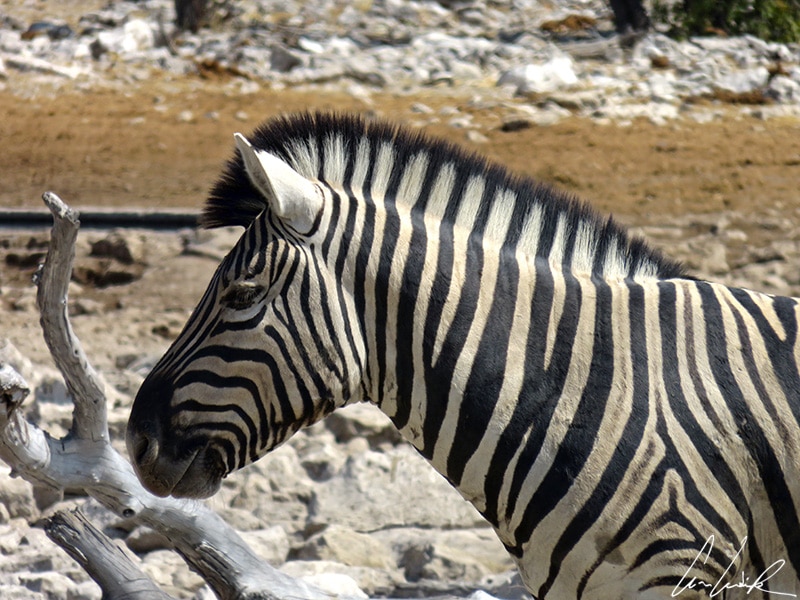
Each hypothesis is based on more or less strong arguments. The first hypothesis led the field for nearly a century… Francis Galton (naturalist, geographer, and cousin of Charles Darwin) who had studied Zebras in their natural environment remarked :
« In the twilight, they are not at all conspicuous, the stripes of white and black so merging together into a gray tint that it is very difficult to see them at a little distance »
But the race for the mystery of stripes is far from over. A recent study conducted by a team of American-Japanese researchers (published in the journal Plos One) significantly undermines the possibility of barcode-style camouflage. Using digital imaging, researchers have reconstructed the vision of Zebra predators (Lions and Hyenas). The conclusion of the work is clear: stripes do not constitute a reliable camouflage against predators ! The first hypothesis is therefore disproven by hypothesis number 3, thanks to studies conducted in 1981, 1992 and 2012. These studies investigated the effect of light polarization on the behavior of horseflies to determine if the insects are disturbed by white stripes reflecting polarized light. However, in 2015, hypothesis number 2 made a spectacular comeback when an infrared thermometer experiment showed that stripes aide thermal regulation. The body temperature of zebras is lower than that of other animals under similar conditions. For the moment, hypotheses 2 (the cooling mechanism) and 3 (the insect repellent) remain the best bets. But they are not sufficiently verified, and there is no guarantee that they will hold up.
Turning from this scientific debate, I prefer an entirely different explanation: that of the vision of the French poet, Robert Desnos (The Zebra, horse of twilight):
« Under the bright sun of Barbary,
he comes out of the stable
And grazes on the prairie
The herbs of sorcery.
But his coat bears the scars of prison,
the shadows of the prison bars ».
Awesome as an Antelope…
Etosha National Park is home to a multitude of animals, including many Antelopes. It is fascinating to watch them move in herds that flow forward, nothing distracting them from their objective. Even cars do not disturb them in any way. We spend our time observing these beautiful Antelopes, moving as if in the pageant of a beauty contest…

Welcome to the election of Miss Antelope Etosha 2018. The candidates are eagerly awaiting the start of the competition. This contest gives the winner the title Etosha… Without further ado, here is the presentation of these beauty queens, including the Greater kudu (Tragelahus strepsiceros,) probably the most beautiful Antelope. It is recognizable by its imposing size and its brown/blueish grey to reddish brown color with a subtle white stripe along the torso. They have a small white chevron, which runs between the eyes. Its mouth is also surrounded by white. The Greater Kudu is one of the largest species of Antelope. Bulls are larger than the cows. Males can weigh up to 690 pounds and females up to 450 pounds. The bulls have large and long twisted horns, which straightened would reach an average length of about 47 inches. The female is hornless without a beard and nose marks. The Great kudu has very developed ears to capture the slightest suspicious rustle. This is very useful in case of danger because it is the slowest Antelope and it does not run very fast on flat ground. On the other hand, in the mountains, it can quickly throw off a follower, making jumps as high as 8 feet high. In size, the Great kudu ranks just behind the Cape Eland, recognizable by its massive silhouette and twisted horns.

The Cape Eland (Taurotragus oryx), like the Oryx, lives on open plains. They adapt to arid conditions and period of drought thanks to a little trick: the Cape eland, thanks to its large size, can raise its body temperature to 108°F during the day (outside the brain area) but during the night allows its body temperature to fall to reduce heat. Therefore sweating and water loss can be delayed during the day while the body temperature increases. Thus, the Eland limits water loss. I must admit that I really like its majesty the South Africa Oryx (Oryx gazella) which graces the coat of arms of Namibia. With its straight, pointed, V-shaped horns, it is also recognizable by its two-tone face mask (black spot on the snout and black stripe on the eyes). And for once, both genders have spectacular long and straight ringed horns that average 33 inches in length! The only difference between males and females is their horns. Males horns tend to be thicker with larger bases, females have longer and thinner horns. The Oryx can run up to 50 mph. Although she generally prefers to flee from her predators, she is also the only Antelope that can kill Lions! Another Antelope advocating for male-female equality, at least as far as horns are concerned, is the Red-bubal Hartebeest (Alcelaphus buselaphus.) Both genders have horns up to 28 inches long. It has a characteristic brownish-red color. Although the Red-bubal Hartebeest has poor eyesight, it has exceptional hearing and smell as compensation.
« The Gazelle. To say its name is to recall all the poetry that borrows from the elegant lightness of its shape, the delicacy of its size, the finesse of its limbs, the vivacity, and the magic softness of its black eyes »
(Dictionary of natural history and natural phenomena)
Let’s change species and move on to another graceful, medium-sized Antelope… Its general appearance reminds us of our European deer. With dark brown to short reddish-brown hair on its back, the Black-faced Impala (Aepyceros melampus petersi) is distinguished by a large, solid black stripe along the midline that runs upward to the eyes. The other characteristic includes the larger black tip of the ear. The male has strongly ringed lyre-shaped horns between 18 and 36 inches long. The female is hornless. The Impala is known for its spectacular leaps over 10 feet high and 32 feet long, and its high speed of up to 50 mph. When it feels in danger, a herd of impala leaps like a cloud of locusts, disrupting Lions, Hyenas, Cheetahs, Leopards and other Wild dogs and constituting a good anti-predator strategy. Another leaping creature with a slender, long-legged silhouette, and well known in the savannah, is the Springbok (Antidorcas marsupialis) often called “jumping gazelle”. Both sexes have a pair of long black horns about 20 inches long that curve backward. The Springbok has been a symbol of South Africa and is the mascot of the national rugby team. It is known for its unique jumps up to 7 feet into the air. When the Springbok jumps, it simultaneously lifts all four legs into the air in a stiff-legged posture with its back bowed and the white tail raised.
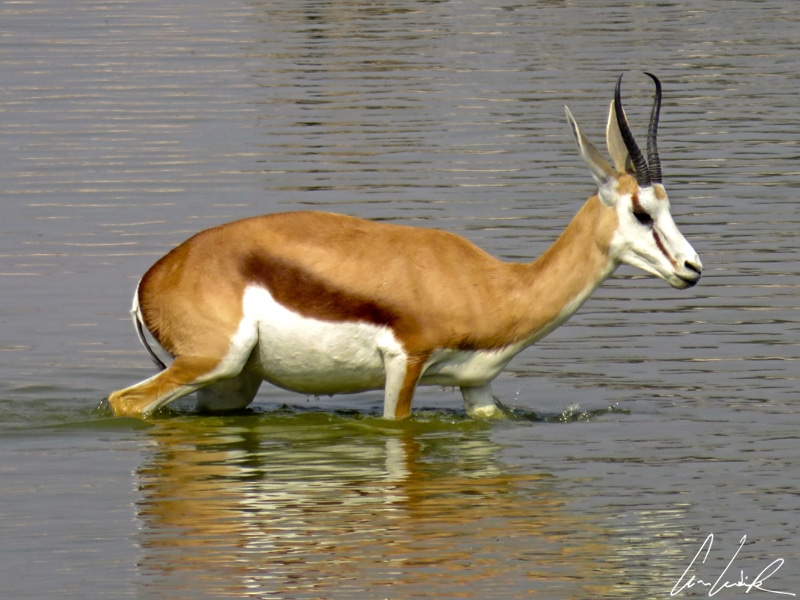
But what is this young lady in a regional costume doing in the middle of our Miss Antelope Etosha 2018 contest? And she also hums this Ostrich….
« My feathered thing / It caresses you / With great pleasure / All in finesse »
Mon truc en plumes – Zizi Jeanmaire
Granted, the largest bird in the world has superb measurements and with its long legs measures nearly nine feet. Its long powerful legs allow it to run at a speed of 43 mph (sprinting to 56 mph) covering up to 16 feet in a single bound. At the end of his very long neck is a disproportionately small head. At least we can’t accuse him of having a swollen head ! Okay, it is out of the contest, but couldn’t we practice the Ostrich strategy on this one ?
Okuhepa (thanks in Herero)
Find more on Namibia
- Waterberg Plateau Park !
- Lake Otjikoto, a lake that digs its own hole !
- A glimpse of Etosha National Park
- Etosha National Park: A journey to the Animal Kingdom
- Epupa Falls: rendezvous in Himba land
- Encounter with Desert Elephants and Welwitschia Mirabilis
- The Petrified Forest and Rock Carvings of Twyfelfontein
- The Mysterious Skeleton Coast, and Cape Cross’ Fur Seals
- Walvis Bay:Rendezvous with Desert and Ocean

